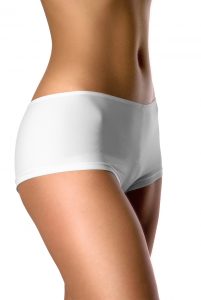 Considering a tummy tuck is a significant decision, and determining the right time for the procedure is essential for optimal results and a smooth recovery. A tummy tuck, also known as abdominoplasty, is designed to remove excess skin and fat from the abdomen and tighten the abdominal muscles, resulting in a flatter and more toned midsection. Whether driven by aesthetic goals or the desire to improve body confidence, understanding when to undergo this procedure is crucial. In this blog post, we will explore various factors that can influence the timing of a tummy tuck, ensuring you make an informed decision tailored to your unique circumstances. Board-certified plastic surgeon Dr. Bryson Richards provides tummy tuck to patients in Las Vegas, NV, and surrounding locations.
Considering a tummy tuck is a significant decision, and determining the right time for the procedure is essential for optimal results and a smooth recovery. A tummy tuck, also known as abdominoplasty, is designed to remove excess skin and fat from the abdomen and tighten the abdominal muscles, resulting in a flatter and more toned midsection. Whether driven by aesthetic goals or the desire to improve body confidence, understanding when to undergo this procedure is crucial. In this blog post, we will explore various factors that can influence the timing of a tummy tuck, ensuring you make an informed decision tailored to your unique circumstances. Board-certified plastic surgeon Dr. Bryson Richards provides tummy tuck to patients in Las Vegas, NV, and surrounding locations.
Understanding the Purpose of a Tummy Tuck
A tummy tuck primarily aims to improve the appearance of the abdominal area by addressing issues that cannot be resolved through diet and exercise alone. This procedure is particularly effective for those dealing with loose skin, stubborn fat deposits, and weakened or separated abdominal muscles. These concerns are often the result of significant weight loss, pregnancy, or the natural aging process.
Individuals who have undergone substantial weight loss may experience excess skin that does not shrink back to fit their new body shape. Similarly, pregnancy can leave mothers with stretched skin and muscles that may not return to their pre-pregnancy state. Aging can also lead to a loss of skin elasticity and muscle tone in the abdominal region. In these cases, a tummy tuck can restore a firmer and more toned abdominal profile, enhancing overall body contours.
Beyond the cosmetic benefits, a tummy tuck can also provide functional improvements. For instance, removing excess skin can alleviate physical discomfort such as skin irritation or infections that can occur in skin folds. Additionally, tightening the abdominal muscles can improve posture and core strength, potentially reducing back pain and enhancing overall physical function.
Understanding the multifaceted benefits of a tummy tuck can help determine if the procedure aligns with your goals and needs. Whether you aim to achieve a smoother appearance or seek relief from physical discomfort, recognizing the comprehensive advantages of a tummy tuck can guide you in making an informed decision.
Assessing Your Current Health and Weight
Before deciding on a tummy tuck, it’s crucial to evaluate your current health and weight status. Ideal candidates for the procedure should be in good general health, free from conditions that could complicate surgery or recovery. Maintaining a stable weight is also important; individuals should be at or near their target weight, as significant weight fluctuations post-surgery can affect results. If you are planning to lose more weight, it might be best to postpone the procedure until you have reached your goal and maintained it for several months. This ensures the most effective and lasting outcomes, minimizing the need for additional procedures in the future.
Postpartum Considerations for Mothers
After childbirth, many mothers contemplate a tummy tuck to restore their pre-pregnancy abdominal appearance. However, the timing of this procedure is particularly important. It is generally advised to wait until you have decided not to have more children before undergoing a tummy tuck. Future pregnancies can stretch the abdominal muscles and skin, potentially undoing the surgical results.
For those who have recently given birth, patience is essential. Allowing your body at least six months to a year to recover naturally can make a significant difference. This period gives your abdominal muscles and skin time to retract to their new normal and lets you focus on post-pregnancy weight loss and rebuilding core strength. Both of these factors can enhance the results of your tummy tuck, providing a more toned and firmer abdominal profile.
Additionally, breastfeeding mothers should consider waiting until they have finished nursing before scheduling the procedure. Hormonal changes associated with breastfeeding can affect skin elasticity and overall recovery. This waiting period also provides an opportunity to develop a stable exercise routine and maintain a consistent weight, both of which are critical for long-lasting results.
Lastly, the physical demands of motherhood should not be underestimated. Recovery from a tummy tuck requires ample rest and limited physical activity, especially lifting. Ensuring you have adequate support at home for childcare and household tasks can facilitate a smoother recovery. Planning the timing of your surgery around these factors can significantly contribute to a more successful and stress-free experience.
Timing After Significant Weight Loss
After significant weight loss, excess, sagging skin may not conform to your new body shape, and a tummy tuck can effectively address this issue. It’s advisable to schedule the procedure once you’ve reached your weight loss goals and maintained a stable weight for at least six months. This stability allows your body to fully adjust to its new size, minimizing the likelihood of additional weight changes that could impact surgical results.
A steady weight not only enhances the aesthetic outcomes of a tummy tuck but also reduces the risk of complications during and after surgery. Fluctuating weight can stretch the newly tightened skin and muscles, potentially undoing the benefits of the procedure. Therefore, it’s important to ensure that your weight is consistent before moving forward with the surgery.
In addition to physical considerations, maintaining a stable weight demonstrates a commitment to a healthy lifestyle, which is crucial for the long-term success of a tummy tuck. Post-surgery, adhering to a balanced diet and regular exercise routine will help preserve the results and improve overall well-being.
Taking the time to let your body adjust after significant weight loss can also enhance your mental readiness for the procedure. Achieving and maintaining your weight goals can boost confidence and provide a clear perspective on your aesthetic objectives, ensuring that your decision to undergo a tummy tuck is well-informed and aligned with your long-term health and appearance goals.
Seasonal and Lifestyle Factors to Consider
When planning a tummy tuck, it’s essential to consider how seasonal and lifestyle factors can influence your recovery and overall experience. Many patients find that scheduling the procedure during cooler months offers a practical advantage. The cooler weather allows you to wear loose, comfortable clothing that can easily conceal compression garments and any swelling that may occur post-surgery. This can help you feel more at ease during the recovery period, as you won’t have to worry about tight-fitting clothes causing discomfort or drawing attention to your healing process.
Lifestyle factors, such as work and family commitments, should also be carefully planned around the surgery. Recovery from a tummy tuck typically requires several weeks of rest and limited physical activity. Therefore, it’s beneficial to arrange your surgery during a time when you can take adequate time off from work. This will help ensure you have a stress-free recovery without the pressure of returning to professional responsibilities prematurely.
For those with young children or demanding household tasks, arranging for additional help can be invaluable. The physical demands of caring for a family can interfere with the necessary rest and limited activity required after a tummy tuck. Having support in place for childcare and household duties can facilitate a smoother and more comfortable recovery.
Additionally, consider your social calendar. If you have significant events or holidays planned, it might be wise to schedule your tummy tuck well in advance or after these activities. This will give you ample time to heal and feel your best for important occasions.
Taking into account both seasonal comfort and lifestyle logistics can greatly enhance your tummy tuck experience. By strategically planning the timing of your procedure, you can focus on recovery without the added stress of external commitments and enjoy the best possible results from your tummy tuck.
Consultations with Qualified Plastic Surgeons
Meeting with a qualified plastic surgeon is a critical step in planning your tummy tuck. During these consultations, the surgeon will evaluate your overall health, discuss your specific aesthetic goals, and review your medical history to determine your suitability for the procedure. This personalized assessment is essential, as it ensures that the tummy tuck is tailored to your unique needs and circumstances.
The surgeon will provide a detailed explanation of what the procedure entails, including the potential risks and benefits. This is an excellent opportunity to ask any questions you may have about the surgery, recovery process, and expected outcomes. Understanding the entire process can help alleviate any anxiety and prepare you mentally and physically for what to expect.
Additionally, the surgeon will advise on the best timing for your tummy tuck based on various factors such as your current health, weight stability, and lifestyle commitments. They will outline a realistic recovery timeline, so you can plan accordingly and ensure you have the necessary support at home.
Consultations also give you a chance to view before-and-after photos of previous patients, which can provide a clearer picture of the potential results. This can help set realistic expectations and ensure that your goals are achievable through the procedure.
Choosing a highly qualified and experienced plastic surgeon is crucial. Look for board certification and positive reviews or testimonials from previous patients. Building a rapport with your surgeon and feeling confident in their expertise can significantly impact your overall experience and satisfaction with the results.
By thoroughly discussing your goals and concerns with a qualified plastic surgeon, you can make an informed decision about your tummy tuck and set the stage for a successful outcome.
Contact Las Vegas Board Certified Plastic Surgeon Dr. Richards to Schedule a Consultation
If you would like more information on cosmetic surgery procedures and treatments performed by Las Vegas, Nevada plastic surgeon, Dr. Bryson Richards please contact us at 702.870.7070
Taking new patients from Las Vegas, Bullhead City, Laughlin, Pahrump, Mesquite NV and surrounding areas.

 Undergoing a
Undergoing a